Last-Minute NYC Holiday Gift Guide 🎁
We’ve created a holiday gift guide with presents for the intrepid New Yorker that should arrive just in time—


Poor Irish cook Mary Mallon was known for more than just her dishes for affluent families in New York City: after supposedly infecting 51 people with typhoid, she became infamously known as “Typhoid Mary.”
Emigrating to New York in 1883 as a teenager, Typhoid Mary, who was born in 1869, lived with her aunt and uncle and served as a cook for seven families before discovering she was an asymptomatic carrier of the disease, which meant that she could spread the disease without experiencing any of the disease’s symptoms.
“She denied ever having been sick with the disease, and it is likely she never knew she had it, suffering only a mild flu-like episode,” historian Judith Walzer Leavitt wrote in her book “Typhoid Mary: Captive to the Public’s Health.”
Typhoid fever is a bacterial infection caused by a specific type of Salmonella. Many of the people to whom Typhoid Mary spread the disease experienced a high fever for several days, headaches, abdominal pain, and rose colored spots. Research from Stanford in 2013 suggests that salmonella actually can hide out in immune cells, which alters the cells’ metabolism and can lead people to become asymptomatic carriers.
Before the advent of antibiotics, typhoid fever had a death rate of anywhere between 10 and 30%, and remains so for those today who are unable to receive effective treatment. That number gets reduced to 1 to 4% if the correct treatment can be obtained. According to a 2010 article from the University of Edinburgh’s Journal of Global Health, “Typhoid and paratyphoid fever remain important causes of morbidity worldwide” with the highest incidence rates in Sub-Saharan Africa.
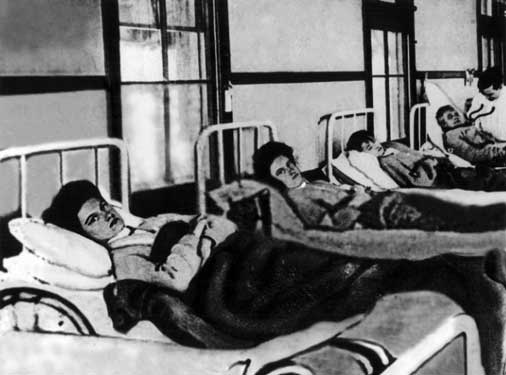
“Typhoid Mary” Mallon in hospital bed. Photo from Wikimedia Commons credited to be from June 20th, 1909 New York American publication.
Within two weeks of starting work in Mamaroneck, Westchester, residents began to develop typhoid fever. As she continued to move jobs, more and more members of the families she served developed fevers, yet Typhoid Mary never experienced any symptoms. In 1906, she took a chef position in the tony suburb of Oyster Bay, Long Island and soon infected 10 of the 11 family members. After similar outbreaks happened with three more families, she found a job with New York banker Charles Henry Warren, who rented a summer house in Oyster Bay, yet by the end of the summer, six of the eleven family members had typhoid. It was proposed that Mallon failed to properly wash her hands before serving food and would often serve raw peaches with ice cream in one of her most popular desserts.
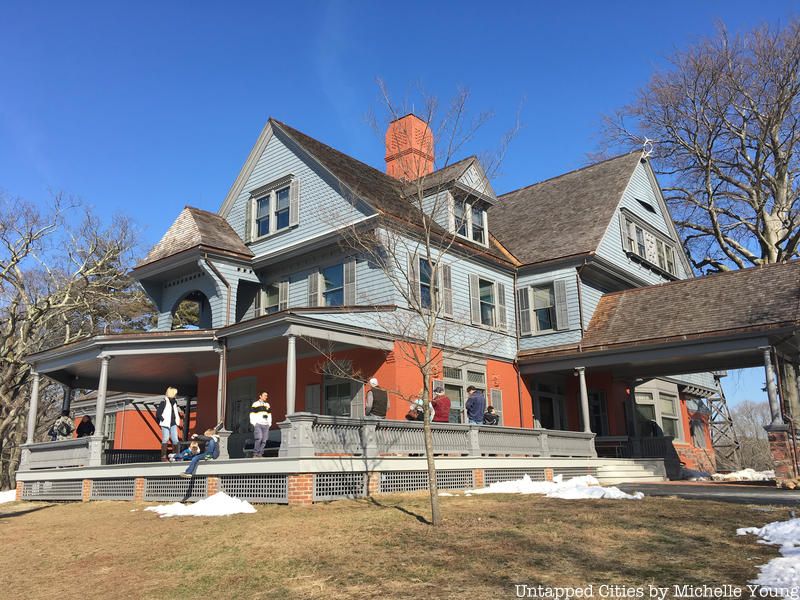
Sagamore Hill, the home of Theodore Roosevelt, was just nearby Oyster Bay.
In 1906, the owners of the Oyster Bay home hired typhoid researcher George Soper to investigate, suspecting that Mary was the source of the typhoid outbreaks because everything in the house came back negative. Soper struggled to find Mary because she would leave each job without a trace, yet he soon discovered her working at a penthouse on Park Avenue. Mary refused to give Soper any stool or urine samples, so Soper began to document her employment history. With the help of the New York Department of Health and numerous police, Mary was detained and tested positive for typhoid, although she still felt that she was unjustly taken in since she felt perfectly healthy.
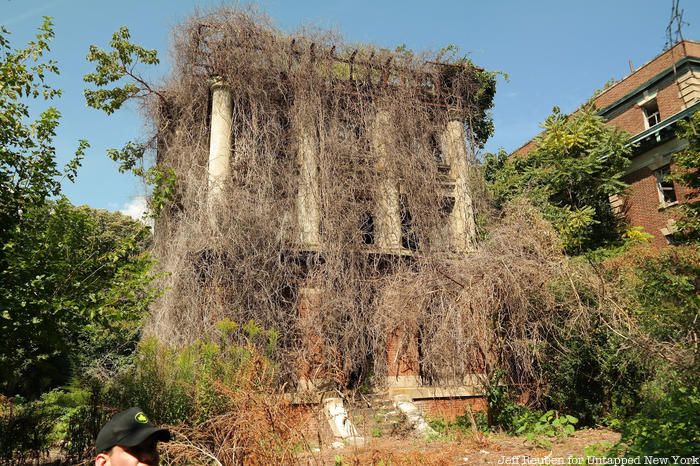
An abandoned building on North Brother Island
For three years, Mary was transferred to Riverside Hospital on North Brother Island, a small island in the East River between mainland Bronx and Rikers Island. The Riverside Hospital was first opened in the 1850s as the Smallpox Hospital but eventually expanded to treat other quarantinable diseases. While there was certainly controversy over the practices of the institution, both medically and socially, Mason writes in North Brother Island, The Last Unknown Place in New York City, “North Brother Island worked. It protected the city from pestilence. The threat and fear of infectious diseases were great, and Riverside Hospital was essential to treating it in terms of the new science and policies of public health.”
Cities like Philadelphia looked at New York City’s solution as an example. Photographer and reformer Jacob Riis was also a supporter of the undertakings at Riverside Hospital, finding it peaceful and effective, and felt, as Mason writes, “exile to North Brother Island was necessary to protect the city and well worth the cost, both social and financial.
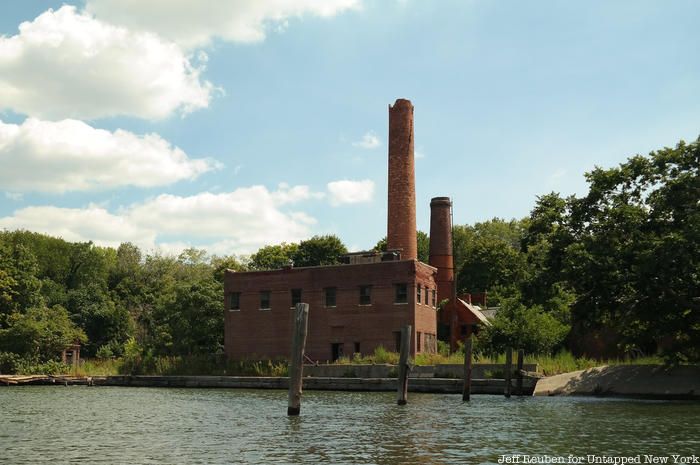
North Brother Island from the East River
Mary lived in a house built especially for her. While living on North Brother Island, Mallon expressed frustration with her isolation, noting “Why should I be banished like a leper and compelled to live in solitary confinement with only a dog for a companion?” During her time there, she unsuccessfully sued the health department, denied having her gallbladder removed, and agreed to never cook again in exchange for her release.
Because she agreed to give up cooking, she became a laundress, but the pay was so low that she changed her name to Mary Brown and worked at numerous kitchens before landing a job at Sloane Hospital for Women in New York City. While there, she infected 25 people, two of whom died, and after five years the health department found her after police arrested her when she brought food to a friend on Long Island.
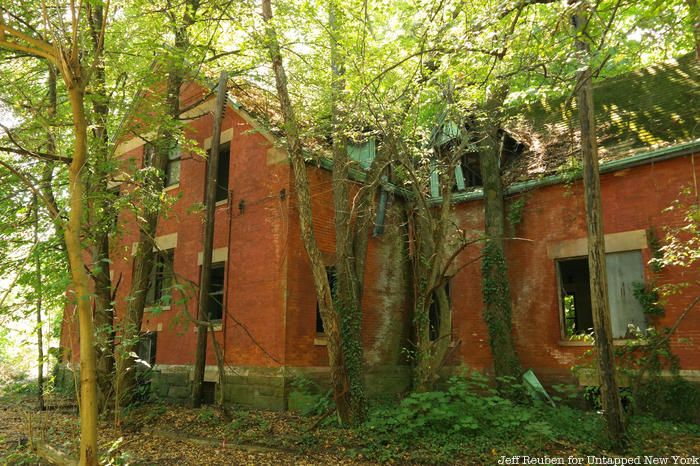
Abandoned house on North Brother Island
Mallon was once again sent to North Brother Island, this time for 23 years until she died. Despite leading to the deaths of only three people, rumors spread that Typhoid Mary was responsible for infecting and killing hundreds of people. An article written in the New York American, which had a circulation of nearly 800,000, noted that “It is probable that Mary Mallon is a prisoner for life.” Mallon later wrote a letter to the New York American that “I have been in fact a peep show for everybody,” revealing her isolation and refusal to accept her quarantine on the island.
Mallon faced harsh criticisms from the media during her quarantine, yet she ultimately able to work as a technician in the island’s laboratory. However, six years before her death, she suffered a stroke and was subsequently paralyzed. Mallon later died of pneumonia at age 69.
Yet, according to a recent Guardian article, Typhoid Mary “suffered prejudice not shown to other asymptomatic typhoid carriers, including some who infected more people than Mallon but were quarantined for only a few weeks.” Figures such as Tony Labella, who caused over 100 cases, did not face anywhere near the level of restrictions placed on Typhoid Mary, yet the public quickly turned against Mallon. In the book Fever, about Typhoid Mary, Mary Beth Keane writes “I really believe that, if she had infected a tenement with hundreds of people in it, and far more deaths had been the result, she wouldn’t have been put in the position she was in, working as she did for a wealthy family.”
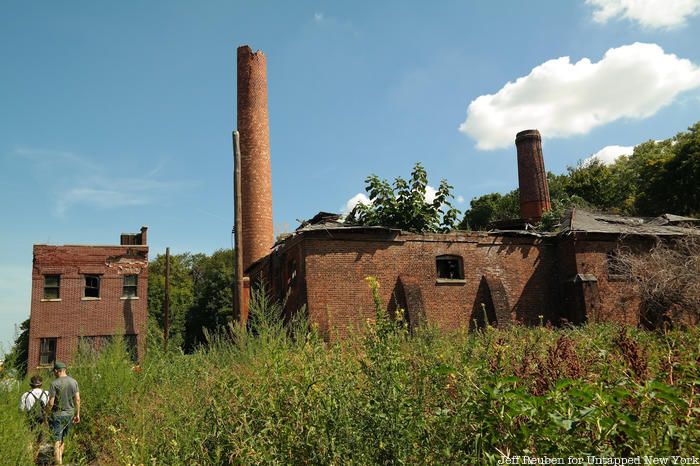
Today, North Brother Island is abandoned and is preserved as a bird sanctuary and maintained by NYC Parks. It served many purposes over the years, including housing for veterans after World War II and hosting drug addiction programs. Many of the buildings, including an impressive Tuberculosis Pavilion, and former roads still exist. It is usually only open to NYC Parks staff, to press on rare occasions, and sometimes if the tides are right, NYC Parks Rangers might take a canoe group out there. The island remains one of New York City’s most mysterious places.
Next, read more about the secrets of North Brother Island.
Subscribe to our newsletter